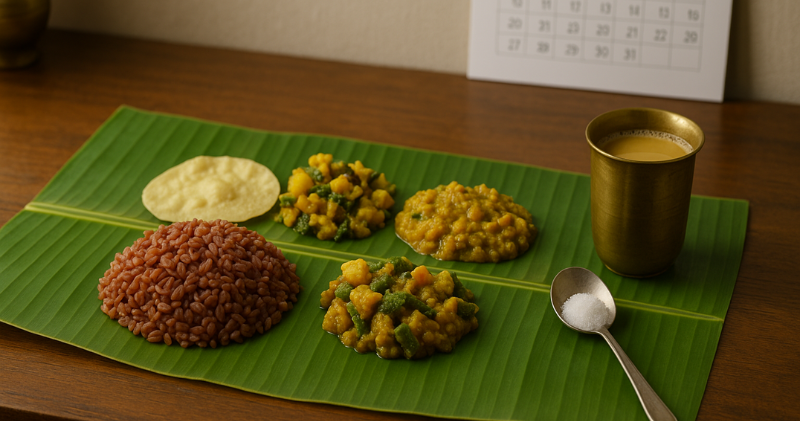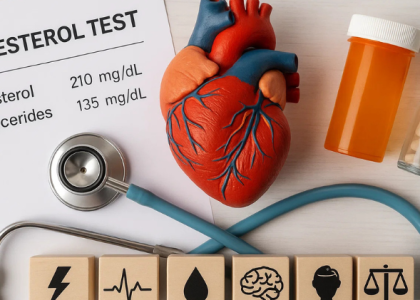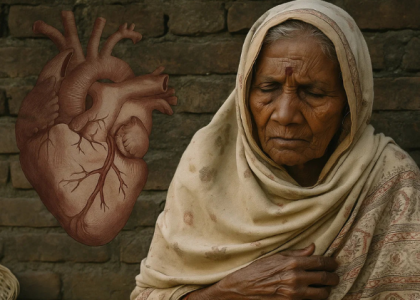Keywords: belly reduction tips, Keralite men’s health
From Belly to Breakthrough: It’s Not Too Late
You’ve seen it — your belt notch keeps moving, your shirt feels tighter around the middle, and relatives joke about the “Kerala pouch.” But this isn’t just about looks or fitting into old clothes. That belly may be pushing your heart closer to danger.
The good news? You can reverse it — no starvation diets or gym memberships required.
This guide is for every Keralite man who’s busy, maybe a bit stressed, and wondering if he’s “too old” to make a change. You’re not. It starts with a few simple shifts.
First, Why the Belly Matters So Much
The round belly many Keralite men carry is usually filled with visceral fat — the kind that builds up inside the abdomen, pressing on the liver and heart. It’s not soft or jiggly — it’s firm and deep.
This internal fat:
- Raises blood pressure
- Increases bad cholesterol (LDL) and triglycerides
- Leads to insulin resistance and diabetes
- Fuels inflammation that damages the heart
And here’s the kicker: South Asian men like you are more likely to store this fat even if they’re not technically “overweight.”
That’s why heart disease often strikes earlier in Indian men — sometimes in the 40s or 50s, while weight still seems “under control.”
Why Keralite Men Are Especially Prone
Let’s be honest — our lifestyle makes it easy to gain belly fat:
- Starch-heavy diet: White rice, parotta, tapioca… delicious, but carb-heavy.
- Sugary chai culture: 2–3 cups a day, each with 2 tsp of sugar adds up.
- Late dinners and slow metabolism: Many eat heavy meals after 8 PM.
- Long hours of sitting: Desk jobs, driving, or waiting rooms — not much walking.
- Weekend alcohol: Even light social drinking adds belly fat fast.
- Stress without outlets: Family pressure, work stress, financial anxiety — often bottled up, not dealt with.
You’re not alone. But awareness is your edge.
3 Key Measurements to Track Instead of Just Weight
You don’t need a scale to know if you’re at risk. Try these instead:
- Waist circumference:
- Over 90 cm (35.4 inches) = high risk
- Measure at the belly button level, standing up straight
- Waist-to-height ratio:
- Your waist should be less than half your height
- Example: If you’re 170 cm tall, waist should be under 85 cm
- How you feel after meals:
- Sluggish? Bloated? That’s often from excess carbs and belly pressure
5 Practical, Keralite-Friendly Ways to Shrink Belly Fat

Forget crash diets. These changes are sustainable — and grounded in what you actually eat and do.
1. Cut White Rice, Not Your Culture
- Reduce white rice portion by half
- Replace with:
- Brown rice (nellu choru)
- Red rice (matta choru)
- Millets (ragi, kuthiraivali)
- Add 1 cup of vegetables and 1 dal or egg to every plate
This keeps flavors intact — and reduces fat-storing sugar spikes.
2. Start a 15-Minute Post-Meal Walk Tradition
- After lunch or dinner, walk around the house or outside
- Invite your spouse or child — make it a routine, not a chore
- Can’t walk? Stand up, do dishes, or stretch for 10–15 minutes
This small shift reduces glucose spikes and belly fat over time.
3. Fix the Chai Trap
- Most people take 2 teaspoons of sugar in each cup
- Try cutting it to 1 tsp or using jaggery
- Swap out the evening biscuit or fried snack with:
- Roasted chana (kadala)
- A boiled egg
- A small fruit or handful of nuts
4. Sleep and Stress Repair the Body — Use Them Well
- Go to bed by 10:30 PM if possible
- Stop scrolling after 9:30 PM to calm your mind
- Practice deep breathing or a short prayer before bed
- Cut alcohol to once a week or less — it fuels belly fat more than food
5. Track Progress Monthly, Not Daily
- Measure your waist on the 1st of each month
- Keep a simple journal:
- What did you eat more of?
- Did you walk most evenings?
- Any sugar cravings or alcohol slips?
Don’t aim for perfection. Aim for awareness and course correction.
Bonus: Ask Your Doctor These 2 Questions
- “Should I get a calcium score test?”
A CT scan to detect early heart artery blockages — especially useful if you have a belly but normal cholesterol. - “Can you test for Lp(a)?”
A genetic cholesterol marker common in South Asians — not part of regular blood panels.
Final Thought
Your belly isn’t just about food — it’s a mirror of habits, stress, and aging. But it’s also something you can control, one meal and one walk at a time.
You’ve taken care of your family. Now take care of the one person who supports them all — you.
This isn’t about becoming thin. It’s about becoming strong, clear-minded, and alive for the moments that matter most.




